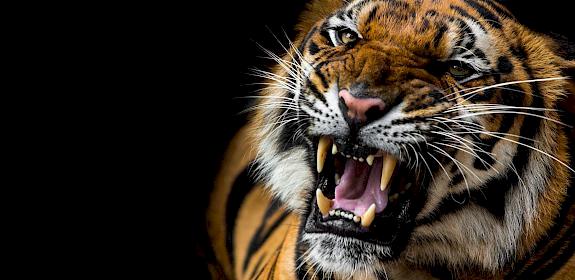WAZA and TRAFFIC join forces to combat illegal wildlife trade
Gland, Switzerland, 18th August, 2016—The World Association of Zoos and Aquariums (WAZA) and TRAFFIC today signed a memorandum of understanding (MoU) to intensify collaboration to combat illegal wildlife trade by jointly supporting its prevention and enhancing public awareness of wildlife-trade related conservation threats.
The MoU commits the two organizations to share knowledge and expertise relating to the illegal trade of species from the wild, with an emphasis on threatened species. This includes information about allegedly captive bred specimens, illegally sourced specimens, suspect animal and plant dealers, breeding and propagation programmes or other relevant information. An important part of the collaboration will be that zoos and aquariums will provide their visitors with educational information on how to avoid purchasing illegal animal products and report suspicions of illegally traded animals.

The international trade in species of conservation concern is monitored by CITES (the Convention on International Trade in Endangered Species of Wild Fauna and Flora). According to TRAFFIC, between 2005 and 2009, EU enforcement authorities made over 12,000 seizures of illegal wildlife products in the EU alone. The species traded are often already highly threatened and in danger of extinction, conditions under which wildlife is transported are often appalling, operators are unscrupulous and do not care how they damage the environment. It is often said that illegal wildlife trade is the fourth most valuable illicit commerce behind narcotics, counterfeiting and human trafficking.
Both organizations agreed to focus their work in South-East Asia, where illegal wildlife trade is growing at an alarming rate. Species of particular concern include songbirds, pangolins and freshwater turtles amongst others. Millions of specimens are illegally traded each year, and the impact on wild populations is disastrous. The Critically Endangered Ploughshare Tortoise of Madagascar shows a clear link to the illegal trade in South-East Asia and scientists fear that it might become extinct in the wild in the very near future.
The MoU signed by WAZA Executive Director, Gerald Dick, and Steven Broad Executive Director of TRAFFIC, marks the first ever official collaboration between the two organisations. The MoU comes at a time when illegal wildlife trade is at an all-time high.
“We look forward to working more closely with TRAFFIC to support the eradication of illegal wildlife trade,” said Dr Gerald Dick, Executive Director at the World Association of Zoos and Aquariums (WAZA).
“WAZA members are uniquely placed to help monitor the trade in wild species and ensure it is carried out in a legal fashion and in the best conservation interests of the species concerned: we look forward to a fruitful collaboration,” said Steven Broad, Executive Director of TRAFFIC.
Notes:
Background
The World Association of Zoos and Aquariums (WAZA) is a global organisation that strives to harmonise the principles, policies, practices and strategy for zoos and aquariums worldwide. WAZA is the unifying representative of the global zoos and aquarium community and works in partnership with international conservation organisations such as IUCN and other non-government organisations to advocate for high standards of animal welfare and to achieve conservation in Zoos and Aquariums and in nature www.waza.org
WAZA Facts and Figures
Attracting more than 700 million visitors a year, the world zoo and aquarium community has the unique potential to attract, inspire and mobilise public engagement for species and habitat conservation. The Biodiversity is Us campaign allows visitors to make a direct connection between people and wildlife. Zoos and aquariums educate the public on biodiversity conservation, and hence promote environmentally sustainable development and social and political change. Some of the revenue produced by the zoos and aquariums is dedicated to field conservation projects around the world. Collectively, the amount contributed to these efforts by zoos and aquariums matches or surpasses the contributions of other leading global conservation organisations.
With 70% of the world’s population living in cities by 2030, zoos and aquariums offer a vital connection to the importance of biodiversity in our lives




